Fuel Vent Ice Protection
Added 5/27/2009When flying in accidental icing, one of the things that could cause big problems for a plane is if the fuel vent tube ices over. If it plugs, or ices up, the fuel will still be pumped from the tank by the fuel pump, until the tank starts to have a vacuum in it that is enough to not allow fuel flow anymore. Another effect that happens is that the wing skins cave in at least somewhat and they'll be looking pretty bad. Well, no fuel flow can be a really big deal. Yeah, you have 2 tanks, so if one is iced up you could try switching to the other right away, but, if you build it as normal, both vents will probably be in the same condition. So, people look for solutions on how to make this a non-issue.
One solution that was suggested to me was to put a rudder fairing in front of the vent tube, to shield it from the airflow and prevent icing. If you do nothing else, you may want to at least take this step on one tank. What turned me off to the idea was that doing this would mean that the fuel vent wouldn't have any ram air pressure going into it, helping keep the tank slightly pressurized. That and I ran across another option that has been used by some homebuilders who fly a lot of IMC in their planes.
The option I chose is to install a Tee in the line and a check-valve in the space in the wing root. The way this works is, you still have the vent line going from the bottom of the wing to the tank, but you also have a Tee in the line and that Tee leads to a one-way check valve. You would want a low cracking pressure check valve. The check valve is oriented that it allows air IN to the system, but doesn't allow the pressurized air out of the check valve. The check valve I used was a plain old brass one from Mc Master, with a cracking pressure of .3 psi, and Viton o-rings for fuel compatibility. An important point of the orientation of the valve is that you want the line running to the valve to have to travel upward to get to it. This acts like a trap so that any fuel leaking through the vent line can't flow up and out the checkvalve and into the wing root. It's unlikely to be a worry, with a checkvalve in place, anyway, but it would make for a good mounting method. For those who want to search and find a nice lightweight aluminum check valve, or a stainless one, that wouldn't be a bad idea at all...I just found it hard to find everything I wanted in a valve and have it be available via online ordering. I hate placing phone orders, or tracking down distributors, so I just got a brass one from a place I could order online. They aren't very heavy anyway, and it cost me all of $30 or so for 2 checkvalves, plus shipping. Cheap insurance to prevent the stoppage of fuel flow if the vent should happen to ice over. Ideally, you would use aluminum or stainless, just to prevent galvanic corrosion, but, I am not worried about it as much in this particular use because I can always replace the fitting next to the valve. Keep in mind that the strainer filter fitting, and the fuel sump fittings are brass too.
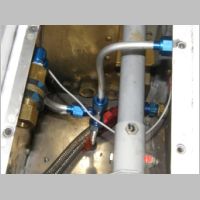
|
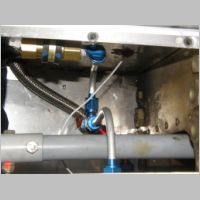
|
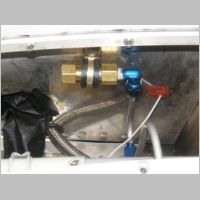
|
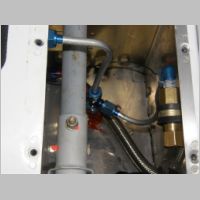
|
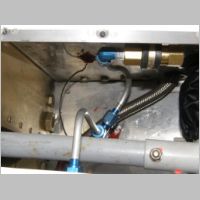
|